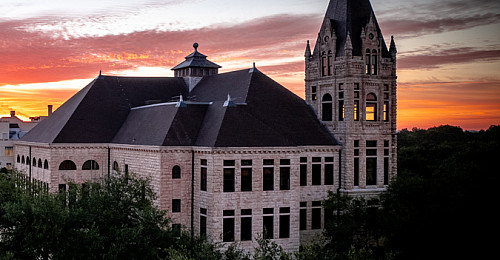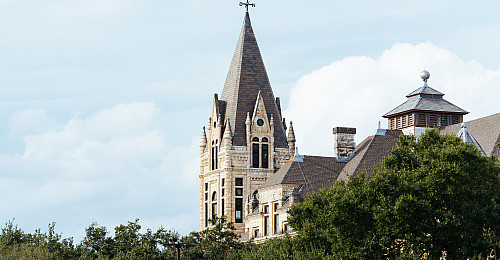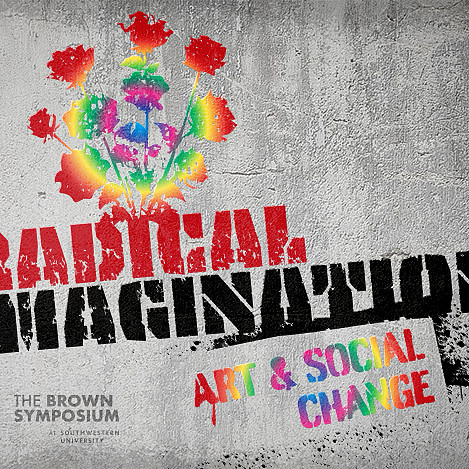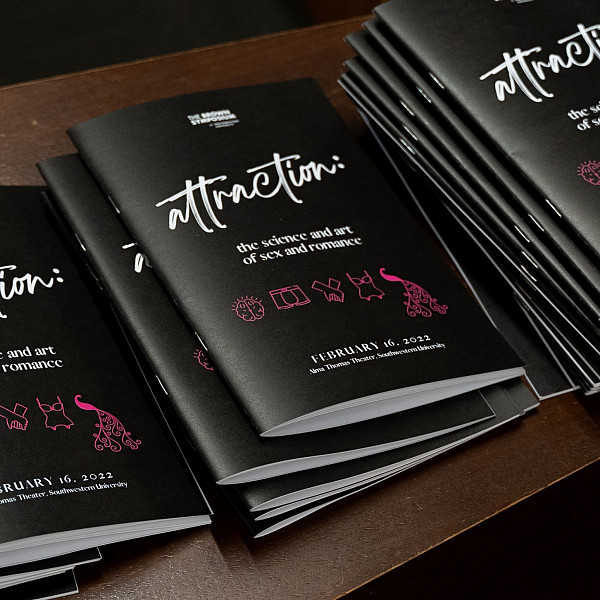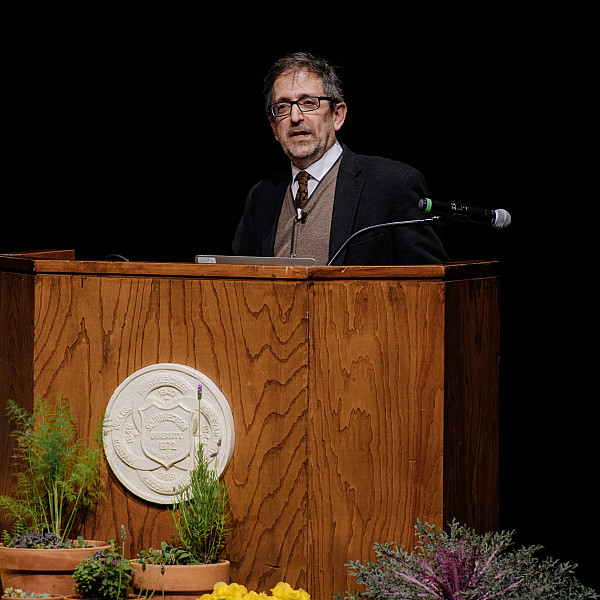News
Brown Symposium Returns with 2025 Theme of “Visualizing the Abstract”
World-renowned speakers scheduled to present at Southwestern University during the 42nd biennial symposium.
January 28, 2025
January 28, 2025
Open gallery
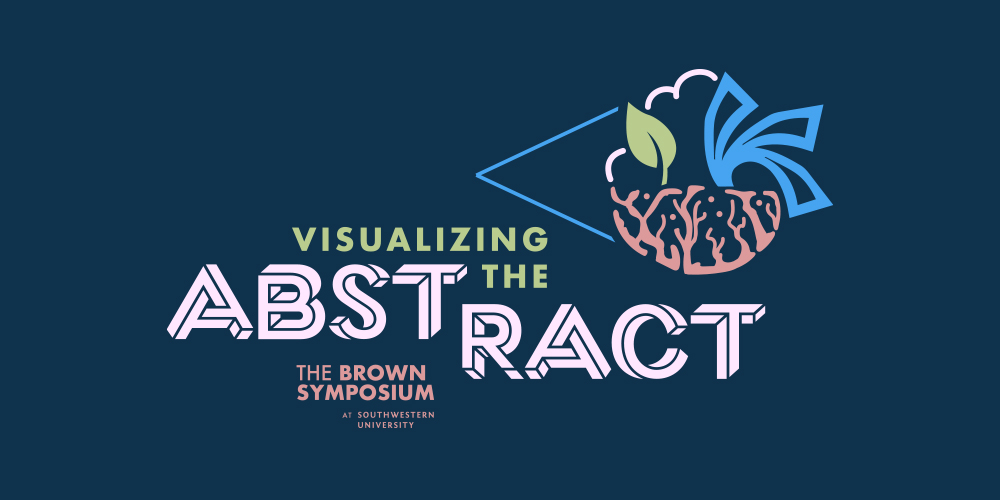
The Brown Symposium returns to Southwestern University this March 4–6, setting out to expand understanding and connection through the theme of “Visualizing the Abstract.” The 2025 edition of the biennial symposium, the 42nd in the series, features world-renowned speakers who work with a variety of media to make the intangible more tangible through storytelling, metaphor, and craft.
During the Symposium, abstract ideas like mathematics and freedom, which are difficult to express in physical form, and climate change, which is almost impossible to grasp due to its overwhelming complexity, will be explored through a variety of avenues, from metal, wood, and crochet, to filmmaking, animation, and imagination.
Organized by John H. Duncan Chair and Professor of Mathematics Fumiko Futamura, along with Elizabeth Root Paden Chair and Professor of Religion and Environmental Studies Laura Hobgood, the 2025 Brown Symposium highlights the work of those who embrace the challenges of exploring abstract ideas, allowing society to tackle existential threats.
“With Dr. Hobgood’s research interests in dogs, animals in religion, and environmentalism, and my interests in matrix theory, the mathematics of perspective drawing, and math and art more generally, it was hard to come up with a topic that appealed equally to both of us,” Futamura said. “Through a lot of brainstorming, we discovered that visualizing abstract ideas is an approach that we find fundamentally important in both our domains.”
A series of expert presenters, representing a wide range of professions – from sculptor to ecologist to mathematician to animator – will take the stage at the Alma Thomas Theater, guiding the audience in “Visualizing the Abstract” across the three-day event.
The Brown Symposium begins on March 4 with a screening and discussion of the documentary “The Ants & the Grasshopper.” Co-created by the award-winning author, documentarian, and academic Raj Patel, who will be presenting at the Brown Symposium on March 6, the documentary follows Anita Chitaya’s journey from Malawi to the United States, where she travels the country meeting with climate skeptics to share the dangers of climate change. This session also serves as Southwestern’s annual Environmental Studies Symposium.
Day two begins on March 5 with mathematician and sculptor George Hart’s presentation, “Sculpting the Abstract,” in which he will explain how he uses mathematical ideas and computer technology in the design and fabrication of his artwork. His sculptures are exhibited in museums and at universities around the world.
Next up, science writer and artist Margaret Wertheim will present “Embodying Mathematics,” where she will explore how math is incorporated into material practices around the world, and how it can be regarded as a form of artisanal play, including through her own work crocheting hyperbolic shapes.
Writer Alex Rosenthal and animator Jeremiah Dickey will kick off the afternoon session with their TED-Ed talk “The mind’s eye: cacophony and silence.” The duo will discuss how they collaborate to create media that has entertained and taught millions of learners around the world despite having brains that couldn’t be more different – Dickey’s a torrent of visual ideas and Rosenthal’s unable to visualize imagery due to a condition called aphantasia.
Political ecologist and social activist Jola Ajibade will present “Transforming Climate Solutions: From Big Ideas to Everyday Justice” in the final session of the day. Ajibade will share her work examining how climate change impacts populations and the complicated consequences of proposed solutions like renewable energy projects, floating cities, and managed retreat programs.
Wrapping up the day on Wednesday will be a gallery exhibit in the Sarofim School of Fine Arts featuring the works of Daina Tamina and Southwestern’s own Star Varner, both of whom connect their art with mathematics.
The final presentation of the 2025 Brown Symposium is set for the morning of March 6, where Patel will share “How to See the Future of Food.” A University of Texas research professor, Patel explores the future of how humans eat and the changes that must be made to ensure the earth remains a survivable planet.
The event will conclude with a speaker panel beginning at 11:00 a.m. inside the Alma Thomas Theater.
“I’m so inspired by the enormous creativity of these speakers – they attract engagement with difficult and complex ideas that would otherwise be inaccessible, intimidating, or just plain boring for most people,” Futamura said. “For me personally, I was inspired to learn how to crochet after hearing Margaret Wertheim’s talk at Southwestern in 2009. I became obsessed with crocheting hyperbolic space and completely taken by the beauty of their forms. It gave me a warm and fuzzy object to play with to understand the cold and rather intimidating topic of hyperbolic geometry. I hope her talk, as well as the other exciting talks, ignite a spark of curiosity that empowers the audience to engage with the ideas through craft, community projects, and activism long after the Symposium ends.”
Established in 1978, the Brown Symposium is a biennial event funded through an endowment established by The Brown Foundation, Inc. of Houston, for professorships at Southwestern. The symposia are designed to enhance the effectiveness of the work for which endowed professorships were established. The Brown Symposium is free and open to the public.
Visit the 2025 Brown Symposium webpage for a full schedule of events and to learn more about the guest speakers and their presentations.

